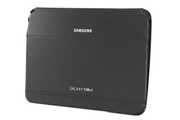
Updated: October 16, 2020 | 8 min read
- Imac 10.5 8 Factory Reset Password
- Imac 10.5 8 Factory Reset Settings
- Factory Reset Imac Without Cd
- How To Reset 2007 Imac
- Imac 10.5 8 Factory Reset Ipad
All of it will be gone when the computer is reset and once the hard drive is wiped, you can’t get them back. So lets Factory Reset an iMac. The first thing you want to do is restart your Mac while holding down the command and R keys until the Apple logo appears. After this a window should appear saying “OS X Utilities”. There are mainly two reasons why you want to restore your Mac to factory settings and erase everything. You want to erase your MacBook Pro/Air, MacBook, iMac to sell or give away the Mac. Your Mac is running slow or having other problems so that you want to delete everything on Mac to start over.
In the Disk Utility app on your Mac, choose View Show All Devices. If Disk Utility isn’t open, click the Launchpad icon in the Dock, type Disk Utility in the Search field, then click the Disk Utility icon. In the sidebar, select the volume you want to restore, then click the Restore button. Remove the Mac setup file. This is the file that OS X checks to determine if the system is already set up. Shutdown the Mac; 5. Your Mac should now automatically shut-down. Power it on by pressing the Power button, and you’ll be presented with the Mac Startup Setup screen, as shown below: 6. Back up your data. When you factory reset MacBook Pro, all the information you have on your hard.
Before we start
Don't rush into a factory reset if your Mac is performing badly or if you find a number of strange or unusual files. We think we have an easier solution for you!
Try MacKeeperto unclog your Mac and get a smoother performance! MacKeeper will help you find and delete useless files, remove duplicates, free gigabytes of memory, and clean junk from your Mac.
The longer you use your Mac—the odds are it will start acting up. If something is not working correctly—factory reset seems like a good plan. Besides this, if buying a newer model, trading, selling your MacBook Air, MacBook Pro, or iMac, or just going back to Windows—you’d still need to take care of a few things first. And factory reset is one of them.
The process of reinstalling and wiping all the information off your Mac seems like a challenging task. Don’t get intimidated that fast—the process is smooth if you know the steps. Follow our step-by-step guide to reinstall your macOS by reading through these sections:
How to Reset Mac to Factory Settings
Note: the following sequence is applicable to both MacBook Air and MacBook Pro.

Plug in your power adapter. Next, follow our guide once your system is copied and you've logged out of your accounts and services. Before you wipe your Mac and erase any hard drive data, the first thing you need to do is start from the Recovery mode.
- Click on the Apple logo in the top left corner of your screen and choose Restart
- When your Mac shuts off and powers back on, press and hold the Command + R keys until you see the Apple logo. Then release the keys. While in Recovery mode, you won’t see your usual login screen. Instead, you’ll see the macOS Utilities window.
- In the macOS Utilities window, choose Disk Utility—click Continue
- Choose your ‘Macintosh HD’ startup disk (by default) and click Erase
- For the macOS High Sierra and higher, choose the APFS format. For the older macOS versions, select MacOS Extended (Journaled) format or Journaled, Encrypted as an extra security option with disk encryption. In this case, you'll need to create a password. Select GUID Partition Map
- Click Erase
- Wait until the process is finished and click Done
- When it’s done—go to the Disk Utility menu at the top—quit Disk Utility by clicking the red cross. From the macOS Utilities window—choose Reinstall macOS. Consider installing the latest macOS BigSur
- Press Continue, accept the license agreement—choose a bootable drive for your macOS
- After the installation process, you have been successfully factory reset your Mac.
In practice, factory reset doesn’t take that much time. After performing it—follow the hints and set up your Mac from scratch.
Steps to do Before Factory Resetting your MacBook
For extra security, back up all your files before restoring your MacBook to factory settings. That way, you'll be able to make sure that none of your personal details are compromised while your Mac is fully prepared for the new owner.
How to back up your Mac
Copy your system with all its components before wiping a Mac. It is best to use Time Machine, a built-in macOS utility that will do all the heavy lifting for you. Using this service means you won't have to import the files to another physical drive manually. When you're up and running on your new Mac, you can restore everything in a snap.
How to erase your personal data
If you plan to sell or give away your Mac, you may want to erase all your data so that the new user has no access to it. Here where it's possible to erase your data.
Deauthorize iTunes account
- Open the iTunes app
- Click Account in the menu bar
- Find the Authorizations option in the list and click Deauthorize This Computer
- Enter your Apple ID and password to confirm
- Click Deauthorize
Sign out of iCloud
For macOS Catalina and later
- Click the Apple logo and select System Preferences
- Click Apple ID
- On the sidebar, select Overview and click Sign Out
For macOS Mojave and earlier
- Click the Apple logo and select System Preferences
- Select iCloud and click Sign Out
Sign out of iMessage
- Open the Messages app
- Click Messages next to the Apple logo and select Preferences
- Click iMessage, then Sign Out
Imac 10.5 8 Factory Reset Password
Unpair your Bluetooth devices
If you are selling your Mac but plan to keep your wireless mouse or keyboard, it’s an excellent idea to unpair them from your old Mac. If you don't unpair the devices and the new owner of your Mac gets in the Bluetooth range of your peripherals, it can inconvenience both of you.
Your keyboard or mouse will try to connect to the old Mac and may get disconnected from yours. This can result in the characters you type appear on the old Mac’s screen, which is not safe.
If you use iMac, Mac Mini, or Mac Pro, you will need to connect a wired keyboard to perform the steps.
- Click the Apple logo and select System Preferences
- Go to the Bluetooth tab
- Hover your mouse over the name of the device to unpair and click the X button next to it
Reset NVRAM
Resetting NVRAM (Non-Volatile Random Access Memory) will erase specific settings. These include your time zone, sound volume, recent kernel panic information, and configurations of your startup-disk and display. It will also restore security features to default.
To reset NVRAM, do the following:
- Click the Apple logo and select Shut down
- Hold down the Option + Command (⌘) + P + R keys. Note: you will need to quickly press and hold them together in the next step, so you may want to remember their location
- Turn back on your Mac and immediately press and hold Option + Command (⌘) + P + R
- Hold the keys for about 20 seconds and then release them
Don’t forget, you can use these instructions if you’re selling your Mac or if you want to erase your startup disk to reinstall macOS. If you plan on keeping your Mac, you might be interested in our guide on how to make a bootable macOS installer before the factory reset process.
Read more:
More Related Articles
What version of OS X is presently installed? If it's Snow Leopard or earlier then you need the discs. Contact Apple to see about purchasing replacements:
Apple Store Customer Service at 1-800-676-2775 or visit online Help for more information.
To contact product and tech support: Apple - Support - Contact Apple Support.
For Mac App Store: Apple - Support - Mac App Store.
For iTunes: Apple - Support - iTunes.
You can also purchase a Snow Leopard DVD if the computer meets the requirements:
Imac 10.5 8 Factory Reset Settings
Upgrading to Snow Leopard

You can purchase Snow Leopard through the Apple Store:Mac OS X 10.6 Snow Leopard - Apple Store (U.S.). The price is $19.99 plus tax. You will be sent physical media by mail after placing your order.

After you install Snow Leopard you will have to download and install the Mac OS X 10.6.8 Update Combo v1.1 to update Snow Leopard to 10.6.8 and give you access to the App Store. Access to the App Store enables you to download Mountain Lion if your computer meets the requirements.
Snow Leopard General Requirements
1. Mac computer with an Intel processor
2. 1GB of memory
3. 5GB of available disk space
Factory Reset Imac Without Cd
4. DVD drive for installation
5. Some features require a compatible Internet service provider;
fees may apply.
How To Reset 2007 Imac
6. Some features require Apple’s MobileMe service; fees and
terms apply.
Imac 10.5 8 Factory Reset Ipad
Feb 16, 2013 3:14 PM
